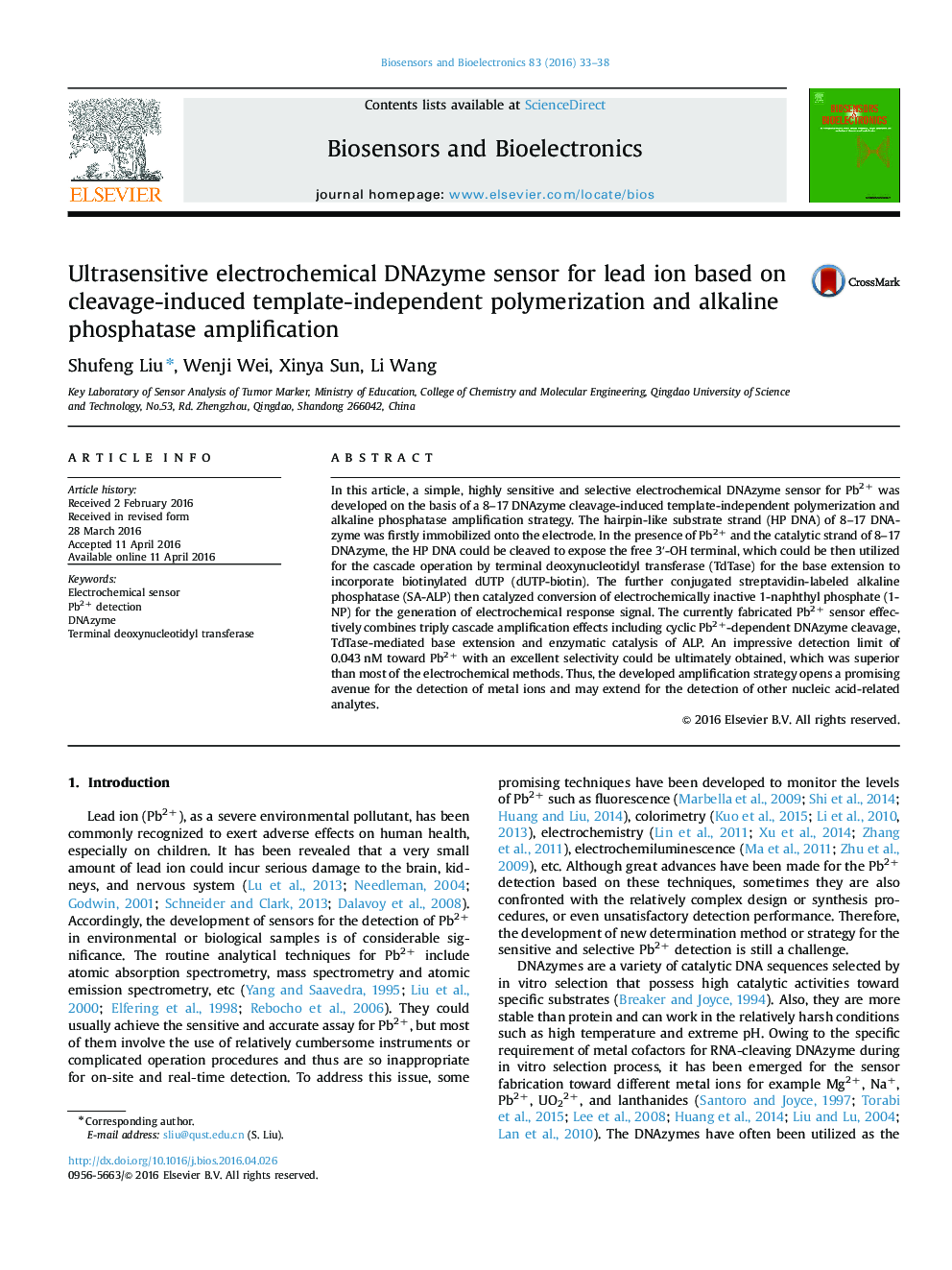| کد مقاله | کد نشریه | سال انتشار | مقاله انگلیسی | نسخه تمام متن |
|---|---|---|---|---|
| 866202 | 1470948 | 2016 | 6 صفحه PDF | دانلود رایگان |

• A highly sensitive and selective electrochemical DNAzyme sensor for Pb2+ was developed.
• The 8–17 DNAzyme cleavage-induced template-independent extension was utilized for amplification.
• An impressive detection limit of 0.043 nM toward Pb2+ could be achieved.
• It opens a promising avenue for the detection of metal ions and other nucleic acid-related analytes.
In this article, a simple, highly sensitive and selective electrochemical DNAzyme sensor for Pb2+ was developed on the basis of a 8–17 DNAzyme cleavage-induced template-independent polymerization and alkaline phosphatase amplification strategy. The hairpin-like substrate strand (HP DNA) of 8–17 DNAzyme was firstly immobilized onto the electrode. In the presence of Pb2+ and the catalytic strand of 8–17 DNAzyme, the HP DNA could be cleaved to expose the free 3′-OH terminal, which could be then utilized for the cascade operation by terminal deoxynucleotidyl transferase (TdTase) for the base extension to incorporate biotinylated dUTP (dUTP-biotin). The further conjugated streptavidin-labeled alkaline phosphatase (SA-ALP) then catalyzed conversion of electrochemically inactive 1-naphthyl phosphate (1-NP) for the generation of electrochemical response signal. The currently fabricated Pb2+ sensor effectively combines triply cascade amplification effects including cyclic Pb2+-dependent DNAzyme cleavage, TdTase-mediated base extension and enzymatic catalysis of ALP. An impressive detection limit of 0.043 nM toward Pb2+ with an excellent selectivity could be ultimately obtained, which was superior than most of the electrochemical methods. Thus, the developed amplification strategy opens a promising avenue for the detection of metal ions and may extend for the detection of other nucleic acid-related analytes.
Journal: Biosensors and Bioelectronics - Volume 83, 15 September 2016, Pages 33–38